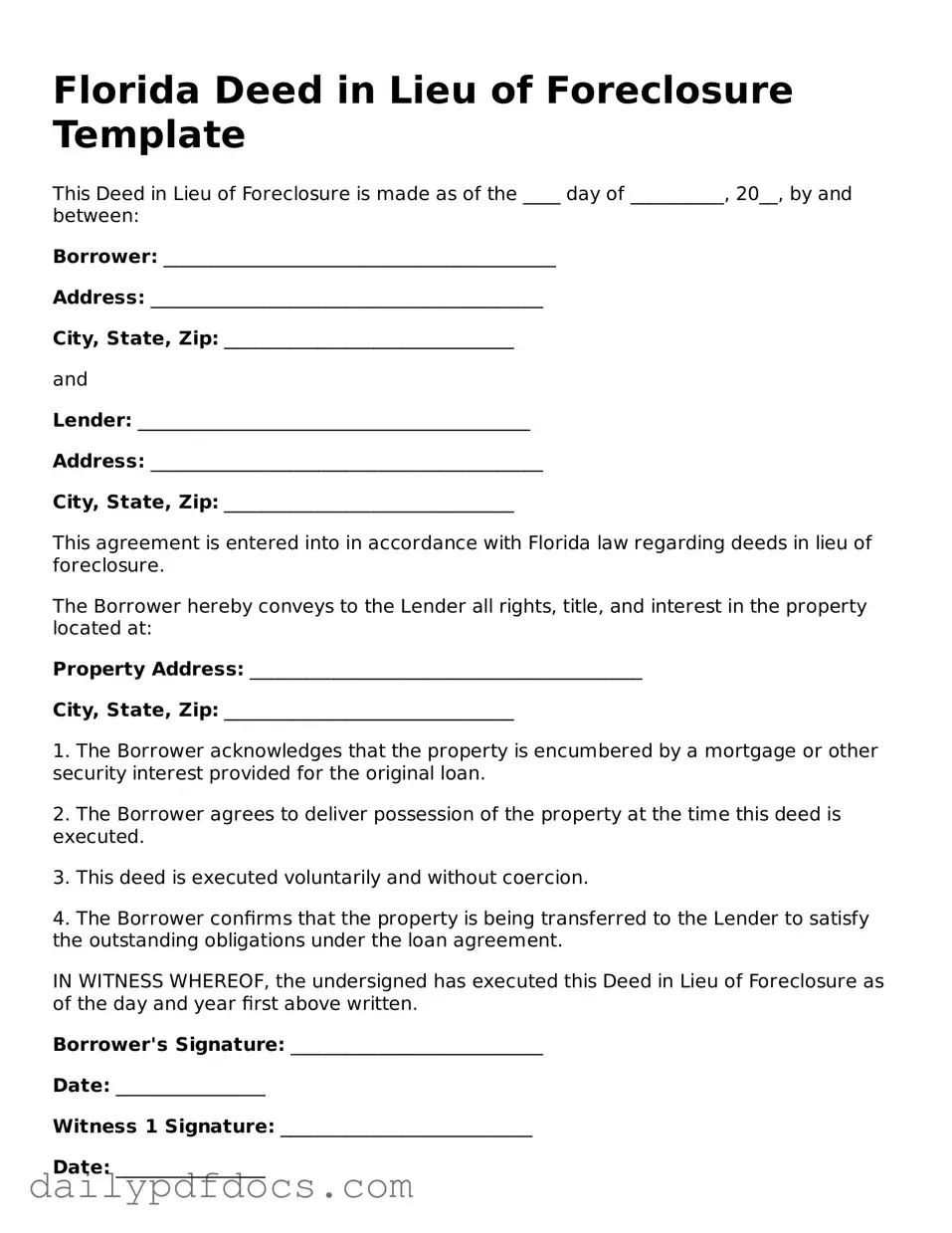Florida Deed in Lieu of Foreclosure Template
This Deed in Lieu of Foreclosure is made as of the ____ day of __________, 20__, by and between:
Borrower: __________________________________________
Address: __________________________________________
City, State, Zip: _______________________________
and
Lender: __________________________________________
Address: __________________________________________
City, State, Zip: _______________________________
This agreement is entered into in accordance with Florida law regarding deeds in lieu of foreclosure.
The Borrower hereby conveys to the Lender all rights, title, and interest in the property located at:
Property Address: __________________________________________
City, State, Zip: _______________________________
1. The Borrower acknowledges that the property is encumbered by a mortgage or other security interest provided for the original loan.
2. The Borrower agrees to deliver possession of the property at the time this deed is executed.
3. This deed is executed voluntarily and without coercion.
4. The Borrower confirms that the property is being transferred to the Lender to satisfy the outstanding obligations under the loan agreement.
IN WITNESS WHEREOF, the undersigned has executed this Deed in Lieu of Foreclosure as of the day and year first above written.
Borrower's Signature: ___________________________
Date: ________________
Witness 1 Signature: ___________________________
Date: ________________
Witness 2 Signature: ___________________________
Date: ________________
State of Florida
County of ___________________
On this ____ day of __________, 20__, before me, the undersigned notary public, personally appeared ________________________, known to me or satisfactorily proven to be the person(s) whose name(s) is/are subscribed to the within instrument and acknowledged that he/she/they executed the same for the purposes therein contained.
IN WITNESS WHEREOF, I hereunto set my hand and official seal.
Notary Public Signature: ___________________________
My Commission Expires: ________________
